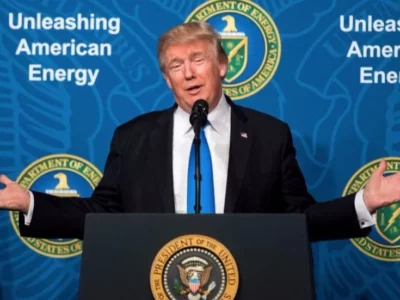NPDES permits on impaired waterways

Precisely what the Clean Water Act requires of point sources that discharge to already-polluted waterways has long been a point of confusion. Now, according to Inside EPA (subscription required) EPA may revise the rules it applies to new permits on impaired waterways. A rulemaking seems far from certain at this point — the story quotes an EPA spokesperson as saying the agency is “considering the possibility” — but if EPA does launch one it should make sure that any regulatory revisions serve the Clean Water Act’s goal of restoring and maintaining the chemical, physical, and biological integrity of the nation’s waters.
It may seem odd that new permits are ever allowed on impaired waters. The Clean Water Act requires that states set water quality standards for the waters within their borders. All NPDES permits (the permits issued for point source discharges by EPA or state authorities) must include both technology-based requirements and any additional limitations needed to ensure that those water quality standards are met. No permit may be issued if “the imposition of conditions cannot ensure compliance with the applicable water quality requirements.” 40 C.F.R. 122.4(d). And no permit may be issued to any new source which “will cause or contribute to the violation of water quality standards.” 40 C.F.R. 122.4(i). Impaired waterways by definition do not meet water quality standards and will not even after technology-based standards are fully applied to the relevant point sources. At first blush it seems that any new source discharging a pollutant that already impairs a receiving water would necessarily “cause or contribute” to violation of water quality standards.
EPA has never endorsed quite such a strong reading of the Clean Water Act, however. The 10th Circuit did, but it was slapped down by the Supreme Court, which ruled in Arkansas v. Oklahoma, 503 U.S. 91 (1992), that new permits are not absolutely banned on impaired waters. That case had highly unusual facts — EPA had found that the disputed discharge would not cause any detectable change in water quality. Most new sources can’t make that claim. Nonetheless, until recently EPA and state permitting authorities thought they could approve new permits that would make water quality worse provided the permittee arranged for an offseting reduction in the pollutant load from some other source.
Then the Ninth Circuit decided Friends of Pinto Creek v. EPA, 504 F.3d 1007 (9th Cir. 2007). EPA (which at the time was the NPDES authority for Arizona) issued a permit for copper discharge from a new mining operation into Pinto Creek, which was already impaired by copper. EPA claimed that the new discharge would be offset by partial remediation of an old mine site. The court was not convinced that the offset was real, but even assuming it was, the court ruled that it could not justify the new permit.
[T]here is nothing in the Clean Water Act or the regulation that provides an exception for an offset when the waters remain impaired and the new source is discharging pollution into that impaired water.
The Ninth Circuit read EPA’s regulations to allow only a very limited exception to the prohibtion on new permits that cause or contribute to water quality violations: where a Total Maximum Daily Load has been prepared and the applicant demonstrates both that the TMDL leaves room for the new discharge and that “existing dischargers into that segment are subject to compliance schedules designed to bring the segment into compliance with applicable water quality standards.” 40 C.F.R. 122.4(i). The permit in question did not qualify, because the TMDL did not establish that other reductions would make room for the new discharges, and because existing point sources were not on a discharge reduction schedule that would bring Pinto Creek into compliance with water quality standards. The Ninth Circuit was even willing to rope in non-point sources, which have become the bane of many waterways because they generally escape any federal regulation. If regulation of point sources is not sufficient to ensure compliance with water quality standards, the court said:
then a permit cannot be issued unless the state or [permit applicant] agrees to establish a schedule to limit pollution from a nonpoint source or sources sufficient to achieve water quality standards.
Since the Pinto Creek decision, industry has been pushing for regulatory changes to reverse what they characterize as a de facto moratorium on new permits on impaired waterways. Those efforts intensified after the Supreme Court denied the permit applicant’s petition for certiorari in January 2009. Now EPA’s making noises about taking up the issue.
Some clarification of the regulations might well be desirable. They are hardly a model of clarity with respect to a number of questions, including what it means for a new source to cause or contribute to a water quality violation, what difference it makes to the permitting decision whether a TMDL is in place, and how nonpoint sources can be drawn into the solution. But if it decides to revisit the regulations, EPA should do so with an eye to advancing the goals of the Clean Water Act, not just because industry finds the current situation inconvenient.
Water quality remains the Achilles heel of the Clean Water Act. EPA’s latest water quality report finds that nearly half of assessed rivers and streams, and almost two-thirds of assessed lakes are still impaired, nearly 40 years after adoption of the modern Clean Water Act. The Act’s failure to clean up waterways is due in large part to federal unwillingness to deal with nonpoint sources, and to failure of the TMDL program, which should provide incentives for states to deal with that problem, to live up to its potential.
The best way to deal with the water quality problem would be a stronger TMDL program, one that requires TMDL implementation. EPA produced a rule to that effect in the Clinton era, but Congress blocked its implementation even before the Bush administration withdrew it. EPA’s current NPDES regulations, as interpreted in Pinto Creek, provide an alternative lever it should not lightly surrender. Barriers to new point source permits can be a strong motivator, because sizeable construction projects typically require stormwater permits. If NPDES permits can’t be had, development can be severely limited. EPA therefore should stick with the requirement that an impaired waterway be demonstrably (and enforceably) on a path to meeting water quality standards as a condition of allowing new permits. That’s the kind of hammer needed to get states to grapple with their water quality problems.
In the larger context of an effective compliance plan, offsets can play a postive role. With the caveat that they must be verifiable and quantifiable, offsets could take advantage of opportunities to make low-cost reductions in non-point source pollution. By analogy to New Source Review in non-attainment areas under the Clean Air Act, new sources should be required to obtain offsets at a ratio greater than 1:1, perhaps even progressively increasing with the level of impairment. That would make the new sources part of the solution, rather than just a new problem.






Reader Comments